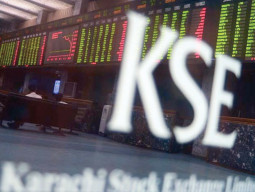
KARACHI:
The consumer goods sector, the numbers show, had a spectacular year and remained on the radar of foreign investors.
According to the analysts, the economic recovery will assist the sector – fast moving consumer goods (FMCGs) and food companies in particular – to perform well in 2014 as well.
According to a report of Topline Securities, a sample of 28 listed consumer stocks generated a return of 90% in 2013 year-to-date compared to the benchmark KSE-100 index which gained 50%.
Considering the economic recovery, growing consumer spending and foreign investors’ unending interest, consumer stocks would continue to perform in 2014, it predicted.

On weighted average, the sample outperformed the broader index while some individual stocks performed even better during last year.
Some companies outperformed the KSE-100 index by more than 50%. For example, stocks of Unilever Foods, a subsidiary of the Anglo-Dutch foods and consumer goods giant Unilever – rallied 123% year-to-date.
Rawalpindi-based beverage company Murree Brewery saw its share price appreciate 220%. Rafhan Maiz Products Company (103%), Mitchells Fruit Farms (108%) and Gillette Pakistan (184%) were the other companies outperforming the index by a significant margin this year.
Among other major players in the FMCG sector, Nestle Pakistan’s stocks gained 68% in the year. It was also in November that Nestle Pakistan became the second largest listed company on the Karachi bourse with market capitalisation touching $4 billion.
By contrast, the outgoing year might not have been a good one for Engro Foods, a subsidiary of Pakistan’s largest private sector conglomerate, Engro Corp.
The local foods giant gained 7% during the year, mainly because of sales-related issues and not because of demand. Quice Foods was the only stock in the sample with negative performance as the company’s share price depreciated 6%.
Arif Habib Corporation Head of Research Khurram Shehzad said one of the major developments that triggered interest in the consumer goods sector was the buyback of Unilever Pakistan’s shares as it was delisted from the Karachi bourse in 2013.
“The buyback of Unilever supported the rally in consumer goods because foreigners didn’t want to sell their shares back then,” he said, indicating that they were bullish about the FMCG sector.
They had investments worth $200 million which, in case of Unilever’s buyback, had to be invested in other consumer stocks which consequently helped the rally and generated broader interest in the sector, he added.
Good earnings
The good performance of the consumer goods sector in general was because of better earnings, as the last three years saw a general slowdown, Shehzad added, saying there was a growth on the consumption side, especially in foods and FMCG. Therefore, the anticipation was that if the economic activity increased there would be further growth.
“There are signs of economic recovery already, reflected in 5% GDP growth in the first quarter of fiscal year 2014,” he said, adding if it ended up at around 4.5% by the end of the year, people will have more money to spend and consumer goods will benefit from it.
With a positive outlook for 2014, Topline has picked five stocks that have lower price-to-earnings ratio but a revenue and profit growth that is in line with the industry.
Topline has chosen Thall, Packages, Treet, Searle and Service Industries as its top picks for 2014 as these have consumer-related products with a good track record. These stocks, though thinly traded, are available at relatively cheaper multiples.
Responding to a question, Topline Securities Senior Manager Research Zeeshan Afzal said earnings and sales growth of these companies is in line with that of the industry but they have lower multiple in terms of price-to-earnings ratio, thus making them a better choice for investment as the investors can recover their money more quickly from these stocks compared to the ones trading at a high PE (price-earnings) ratio.
Though optimistic about consumer goods sector’s performance in 2014, Afzal said the economic recovery would benefit the sector. “For a good 2014, we are looking at 4% to 4.5% GDP growth,” he said.
Published in The Express Tribune, December 31st, 2013.
Like Business on Facebook, follow @TribuneBiz on Twitter to stay informed and join in the conversation.






















































COMMENTS
Comments are moderated and generally will be posted if they are on-topic and not abusive.
For more information, please see our Comments FAQ